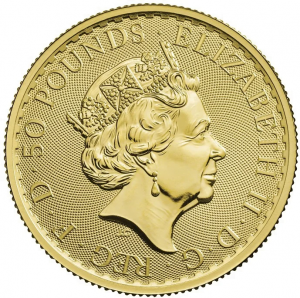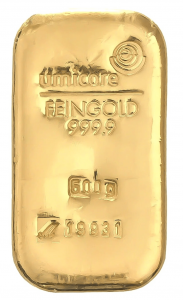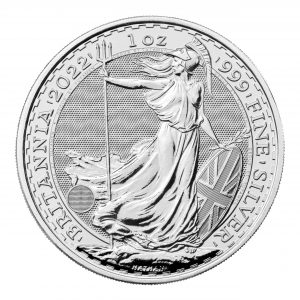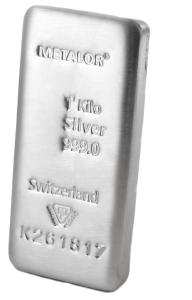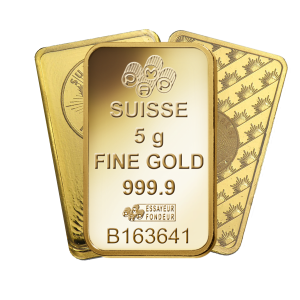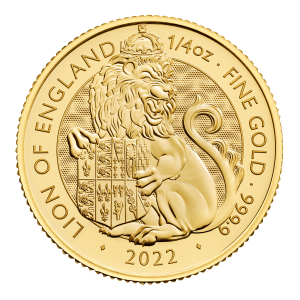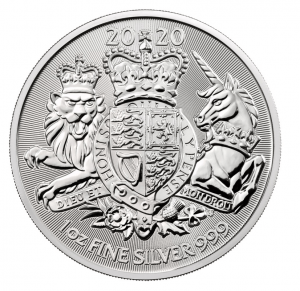Gold’s unique physical properties
The everlasting symbol of luck, prosperity and wealth, choosing to invest in gold – especially rare gold – has always shown to be a shrewd move thanks to its easy liquidity and high value. As one of the most sought-after precious metals in the world, demand has long outstripped supply, meaning it’s always been hot property. But what actually makes up gold itself? What are the physical properties which help keep gold so investable and ensure it’s used in many different ways?
It’s a soft, ductile metal
Gold is extremely ductile and malleable which makes it highly versatile. It’s a heavy metal with a density of 19.3 g cm-3. In fact, just one single gram of gold can be flattened out into a thin sheet of gold which covers an area of one metre – that’s around just 230 atoms thick. It is actually so soft that even a small item such as a coin is enough to scratch a pure piece of gold.
Gold has a very high boiling and melting point
The temperature you need to melt gold is 1,948 degrees Fahrenheit, which is an incredible 1,065 centigrade. In order to strengthen the gold for practical uses, other alloy metals such as zinc, silver and copper are added whilst the gold is being melted. Gold boils at 5,173 degrees Fahrenheit (2,856 Centigrade).
Dowload our FREE Insiders Guide to Tax-Free Gold Investment here
It’s a good conductor of electricity and heat
Gold is an excellent conductor of electricity although it is too expensive to use in cabling, hence the use of copper instead. Exposure to air, moisture, heat and other corrosive agents have an extremely minimal effect on gold, which is why it’s so suited for manufacturing jewellery and coins.
Gold will not tarnish
Unlike silver which can degrade in the air over time, gold will not rust or taint. Gold, in particular, is extremely difficult to corrode. Only very strong acids such as nitric acid and hydrochloric acid can cause gold to become damaged. This is why wedding bands are traditionally made of gold, as they are guaranteed to stand the test of time.
Gold is a noble metal
Gold is a noble metal. Noble metals are a group of metals that do not corrode over time under normal conditions.
Gold is highly reflective
Gold does not absorb light or heat,
meaning it’s supremely reflective. No rays of light are absorbed at all, they are simply reflected.
Gold is very heavy and dense
Gold is also extremely heavy, with a density of 19.4 g cm-3. By way of comparison, lead is only 11.4 g cm-3 in density. This heaviness plays a vital part in many of the physical methods required to mind gold from its many sources.
Carats for purity
Most natural gold is actually impure. It generally contains small but notable traces of other metals including silver, copper, silver, mercury and palladium. It’s actually these other elements that give gold its distinctive colours. For instance, gold that has a large amount of copper will have a red hue to it, whilst gold that contains a lot of less expensive silver will be much paler are far less bright yellow than you would expect from pure gold. The purity of gold is measured in carats with 100% pure gold being 24 carats. 18-carat gold is then 18/24, (75%) pure, and 14-carat gold has 58% purity. Carat values are often used to describe gold bars only come in the following integers: 24, 22, 18, 14 and 9.
Invest with Physical Gold today
Here at Physical Gold we are experts in our field and can help with any aspect of gold investment. This includes gold sovereign coins, gold Britannia coins and bars in weights such as 1oz, 100g and a mighty 1KG. Speak to us on 020 7060 9992 or drop us an email to discover more about our investment opportunities or get advice on trading gold now.
Image Credits: Pixabay and MasterTux
What is gold used for?
Gold is one of the most sought-after and widely used commodities on the planet. The fact that it does not tarnish and is so easily shaped makes it perfect for use in all kinds of applications. It also has many other beneficial properties such as its attractive natural sparkle, and the fact that it’s a great natural conductor of electricity, highlighting the importance of gold across a range of aspects. Here are 15 different uses for gold in the modern world.
1) Jewellery
When most people picture gold, they envision a sparkling necklace or diamond embedded engagement ring. In fact, most of the world’s gold consumption is used in the production of jewellery. Figures estimate that around 52% of the world’s total production of gold is used exclusively by the jewellery industry with countries such as India and China continuing to fuel this massive demand.
Why do we use gold for jewellery?
Gold has been used to create jewellery for thousands of years. You could argue that gold is the perfect metal for jewellery for a number of reasons. One of the main reasons for its everlasting popularity is the fact that it does not react with moisture and so, therefore, does not rust and is tarnish resistant. Visually, it has incredible lustre and its yellow colour is appealing for ornamental jewellery. It’s high ability to alloy with other metals opens up huge opportunity to create a vast array of alternative colours to suit jewellery. Colours will vary according to which metals gold is combined with. Silver produces a white gold, while copper creates a reddish tinge.
Gold’s versatility lends itself to elaborate designs
Gold’s malleability provides the ability to be hammered into very thin sheets, drawn into wires and be melted and cast into ornate shapes, all of which helps creativity in jewellery. As it mixes so well with other metals, the carat (or purity) or the gold is often diluted to decrease this malleability and softness. This suits specialist jewellery production which needs to be strong enough to hold stones. Demand for bespoke jewellery has increased considerably in recent years as more consumers wish to possess individual jewellery items no one else owns. Gold’s various carat mixes make it the most versatile metal to achieve this uniqueness.
Tradition’s effect on gold’s jewellery role
Undoubtedly, the long history of gold being highly valued and representing success and power, has contributed to it being the preferred choice for jewellery. Along with tradition, gold’s ubiquity in various religions has led to vast populations expecting important objects and jewellery to be made of gold.
2) Money/finance
After jewellery, the most common use for gold is in coinage. Due to its rarity gold has long been used as a form of currency and people were using gold coins as far back as 6000 years ago. At one stage many of the world’s currencies were fixed to a gold standard which was set at the price per ounce. Whilst we don’t use gold to make money anymore, it is still used to make bullion coins (e.g. Gold Sovereigns and Gold Britannias), and it is estimated that around 10% of the world’s gold is used in coinage or in financial stores of government.
Why was gold used as currency?
Gold’s relative scarcity suited the concept of currency ideally, with its rarity and desirability providing a sound basis for value and long term exchange. Originally, gold pieces were used as forms of exchange for goods, but overtime size of these pieces became standardised into coins to enable smoother transactions. Even when the first paper money was introduced, gold was kept as collateral to guarantee its value.
Click here to discover the 7 vital factors you need to know before buying gold or silver
3) Investment
Gold has been a popular commodity for centuries and is viewed by investors as a safe haven and an excellent store of wealth. Due to the fact that it is a tangible commodity with a long history of market performance, gold is often purchased by investors seeking to protect themselves against the risks of inflation and downturns in the economy. The most common form of gold investment is usually gold bullion bars or coins. You can also purchase gold exchange funds on the stock exchange.
Gold going digital
Gold has been digitised in various forms to open gold investment to those wishing to actively trade. Whether it takes the form of Exchange Traded Funds (ETFs), spread betting on the gold price or Gold equity funds, the precious metal plays a growing role in investors’ portfolios.

100g Gold Bars
4) Collateral for a loan
In some countries, like India for example, gold is considered very precious and can be used as collateral against loans. As we move towards a more digitised financial system, tangible assets such as gold or silver are likely to become more important and using gold as collateral could become more commonplace.
5) Dentistry
Gold has played an important role in the dental industry for nearly 3000 years, 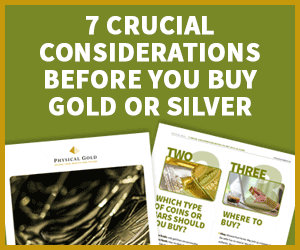
The use of gold in dentistry began to decline in the late 1970s due to the rising gold price. Alternatives were developed, but we’ve recently observed a renaissance in gold usage due to worries that lees inert materials may impact long-term health.
6) Medicine
The unique properties and uses of gold has meant it’s been used to treat a variety of medical conditions since around 2500 BC. Chinese physicians originally used pure gold to treat conditions such as smallpox and skin ulcers. The ancient Romans also used gold salves to treat a variety of skin problems. Today gold is still used in medicinal treatments, particularly the treatment of inflammatory conditions such as arthritis, where injections of a gold solution are sometimes administered in particularly severe cases. Since gold is very resistant to bacteria and non-toxic, it is also frequently used in bodily implants where there may be a risk of infection, such as inner ear implants.
Use of gold nanoparticles for cancer treatment
Colloidal gold nanoparticles are increasingly being used to help the delivery of chemotherapy. Their minute size and non-immunogenicity make their molecules ideal for targeted drug delivery systems. Drug molecules and tumor-specific ligands can be attached to the gold nanoparticles to pursue the tumour without redeploying through the body.
How to sell gold for the most cash – don’t sell gold without watching our video
7) Mobile phones
Not many people know this, but gold can be found in the electronics of every single mobile device in the world. Research carried out by the World Gold Council, discovered that a single phone can contain up to 50 milligrams of gold. This may not seem like a lot but when you consider the number of mobile phone’s there are in the world, it all adds up to a pretty impressive amount of gold.
Why is gold used when silver is cheaper and more conductive?
It’s all to do with the types of electronic devices and gold’s high resistance to rust and corrosion. This is particularly important with solid state electronics which use very low currents and voltage. Examples of these are light-emitting diodes (LED) and liquid crystal displays (LCD) which are based solely on semi-conductors. Obviously, this technology predominates in today’s smartphone screens. With such low voltages, the slightest corrosion at the contact points will disrupt the flow of current, so gold is utilised for its reliability. That’s why gold is a feature of high-end speaker cable connectors.
Here’s the interesting part for gold supply
With gold’s use in every mobile device, the amount of gold in the world is actually shrinking each day! Each contains about 30p of gold, not a lot right? However, with around a billion mobile phones in global circulation and each one with an average of 2 years lifespan, it soon adds up. With very few phones being recycled, this gold is lost forever.

Every one of the billion mobile phones contains gold
8) Computers/laptops
Gold is also frequently used in other electronic devices such as laptops and computers. It is one of the best natural conductors of electricity which is why it is often found in computer chips, allowing your computer to pass on, and receive information more easily.
Why do we use gold?
Whilst not as conductive a metal as silver, gold is more frequently used in electronics due to the fact it doesn’t ever tarnish or rust. With the need for so much data transmitting, the demand for reliability outweighs the high cost of using gold. Generally, gold is utilised to mount processing chips onto motherboards.
9) In space
Gold plays a key role in protecting astronauts from harmful infrared rays from the sun. The visor on their helmet is coated with a thin layer of gold which acts as a filter. Gold is also used on space vehicles to help reflect infrared radiation and stabilize core temperatures. With such vast sums being invested into space research, reliability is key, so the high cost of gold isn’t a deterrent to its usage.
10) Food/drink
Some particularly up-market restaurants use gold shavings or gold leaf to decorate their more extravagant dishes. Gold is non-toxic and can be eaten without consequence, however, it can’t be digested and passes straight through the body. Gold also has no taste so the use of gold in food is purely for decorative purposes.

Japanese gold leaf producers Haku Ichi, serve ice cream decorated in gold.
11) Manufacturing
Gold is frequently used in manufacturing due to its ability to conduct heat and reflect light. It can also be used as a lubricant in any number of engineering applications due to its resistance to cold welding.
12) Buildings
Some particularly grand buildings often feature some form of gold decoration. Gold leaf, in particular, is frequently used to adorn important features on buildings all over the world. Some of the most famous examples include St. Michael’s Cathedral in Kiev, whose golden domes can be seen from miles around, and the Criterion Restaurant in London with its extravagant gold leaf ceiling.
Why is gold leaf used so widely?
Apart from gold’s obvious status symbol and incredible aesthetics, its malleability is the key to it adorning so many prestigious buildings. Gold leaf is created when gold sheets are beaten to an incredibly thin 3 millionths of an inch in thickness. This amazing feat means the gold leaf is very versatile to gild and emboss non-uniform surfaces. It also reduces the cost of material dramatically, allowing larger areas to be gilded. The largest cost is, in fact, the skilled labour required to apply the specialist leaf.
Gold’s anti-corrosive and anti-bacterial qualities also make it a popular choice to use on certain internal and external building surfaces which need to be protected. Gold’s easy marriage with other metals creates the opportunity to gild buildings with a wide variety of gold leaf colours and shades. Despite this versatility, the recognisable yellow of high carat gold is usually selected due to its conspicuous nature.
Less obvious is the use of gold in glass production. It is utilised to create a red hue to the glass and is pivotal for climate control in speciality glass. Whether added to the glass compound or coated onto its surface, the addition of gold helps reflect the sun’s glare and heat while also acting as insulation in the winter.

Palaces and religious buildings use gold leaf to decorate domes
13) Cosmetics/beauty
Gold is frequently used in the cosmetics industry and has been hailed as a revolutionary ingredient in everything from topical skincare creams to lip balms and moisturisers. Its many properties are said to help improve skin tone and elasticity as well as providing significant anti-ageing benefits and improving blood circulation. Gold Nano-particles have been used in the products of some pretty influential names in the beauty industry including L’Oréal and Dior.
14) Printing
Gold ink is becoming increasingly popular with printing companies since photos printed in gold can produce high quality and long-lasting images. CD’s and DVD’s that have been coated in printed gold can also resist scratches and last longer.
More recently, there’s a growing trend to use gold in 3D printing. The reduction in the cost of 3D printers and becoming more widespread has led to a number of materials being experimented with. Essentially using a cast system, gold is increasingly being chosen due produce unique and desirable one-off objects.
15) Displaying wealth & status
For some people, gold is a sign of power and status. Wealthy individuals have always been keen to show off their wealth in the form of gold, whether it’s by wearing a luxury wristwatch or a piece of fancy jewellery. Today gold is used to decorate iPhones, cars and was even used to create an exclusive credit card created by a bank in Kazakhstan. The card was made using gold, diamonds and mother of pearl.
Gold’s high esteem is also reflected in sport. Gold medals and trophies are synonymous with winners. King’s and queens still adorn crowns made of gold, rather than stronger metals, simply because of their global status.
Future uses of gold
More and more uses for gold are being discovered all the time. Our growing dependence on electronics and computers also means that gold usage is likely to grow sooner rather than later.
Harnessing the power of gold nanoparticles is also creating an ever-growing list of applications for gold. Nanoparticles are already being used in botanical research, cancer, toxin and pathogen detection and optical-electronics for sensory exploratory probes.
Physical Gold is one of the leading providers of gold and silver in the UK. Our professional team of experts help guide investors who are interested in tax-efficient solutions, to help diversify their investment portfolio. For more information, please give us a call on 020 7060 9992.
Image sources: Pixabay and Flickr
Building a robust portfolio involves spreading your risk over different asset classes. However, as an investor, you need to consider the dynamics of each asset class that you invest in. Diversification can be an excellent initiative for shaping your portfolio, which will likely continue to evolve. This reorganisation is often due to prevailing market conditions at different points in time and the risks faced by equity and debt markets around the world. Many investors believe that gold should be an integral part of their portfolio, as it provides insurance against market risks. But how can we compare gold investments against equities?

The New York Stock Exchange represents the centre of the global capital markets
The uncertainty faced by the global capital markets
Over the last two decades, the global capital markets have witnessed large degrees of turmoil. The fall of Lehman Bros kicked off the recession in 2008, which resulted in a debt crisis that affected financial institutions and countries all over the world. In 2019, debt levels in China were 300% of the country’s GDP. Australia was also mired in a debt crisis that saw individuals raking up debts up to 200% of their income levels.
Download The Insider’s Guide to Tax Free Gold & Silver Investment
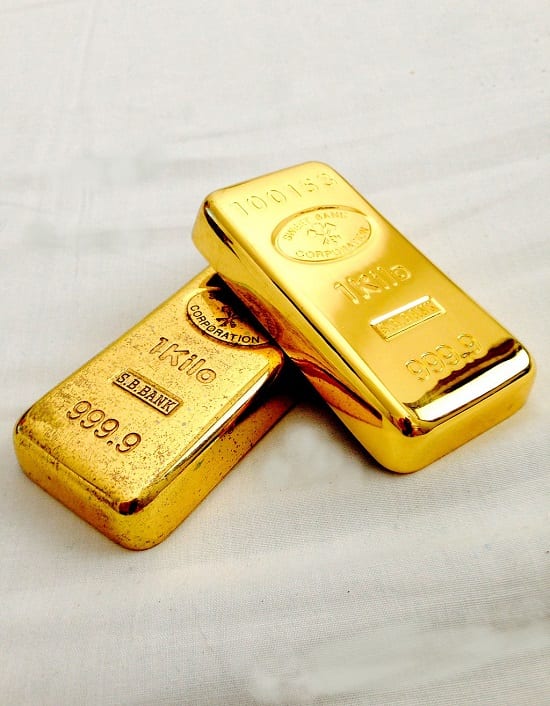
Gold investments provide a safer option during times of market uncertainty
Uncertainty was looming over the US and European capital markets. Then, in 2020, the global pandemic hit the world. As global economies were affected by the impact of the crisis, companies started shutting down due to lockdown measures implemented in several countries across the world. By December 2020, government debt in Australia had almost doubled over four years. COVID-19 pushed the U.K.’s debt levels to £1.125 trillion with a debt to GDP ratio of 97.5%. Naturally, these are legitimate causes for concern when investing in stock markets, particularly at this point. Oh, and we haven’t even mentioned “Brexit” and the long-term effects this is having on the EU, UK, and world economy!
Gold and the equity markets have an inverse relationship
A mixture of gold and stocks is ideal. Both investments can rise or fall in value. However, while stocks can fall to zero (if a company goes bankrupt), physical gold will always have its intrinsic value. The equity and gold market have track records for recording great returns over the medium and long term. While stocks can pay a dividend as well as an increase in value, those partaking in gold investing are looking purely for capital gain. Gold tends to rise when stocks fall, so the two have an inverse relationship.
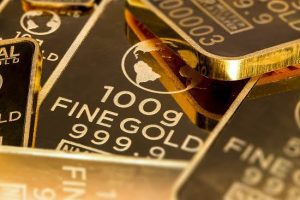
Gold investments are safe from the volatility of stock markets
Gold provides insurance for your portfolio
Therefore, it was no surprise that gold touched its highest ever level in August 2020. Over the last eight months, gold has climbed down from its $2,000 peak and is currently hovering around $1,745 per ounce. It is important to note that the price of gold has never fallen below the $1,000 mark in the last 10 years.
Gold investors always study historical price charts to understand the price movements of gold. Of course, the price of gold has never fallen to $0.00 and never will.
It has continued to rise steadily and created value for investors over a 5 to 6 year period. Gold can also offset market forces like inflation and currency devaluation. In a debt crisis, investors often lose their confidence in hard currency is like the US dollar or GBP and move to gold. Since they are confident that gold will not devalue suddenly, it is a choice worth making.
Indeed, gold is considered to be a safe haven by most investors who want to hedge their risks during a time of market turmoil. As the world hurtles forward towards another economic recession, we are witnessing similar trends in the price of gold. Not only does the yellow metal provide stability to your portfolio, but it also acts as insurance against rough times. Moreover, the price of gold also beats inflation, which makes it an attractive asset class to invest in.
Tax benefits of gold
Gold investors in the UK have certain advantages when investing in gold. Firstly, all investment-grade gold is exempt from VAT in the UK. Therefore, this knocks off 20% of your purchasing price. This is one of the reasons why gold is extremely attractive to investors. Secondly, investing in gold coins that are considered to be legal tender and have a face value can have even greater advantages. Gold coins that are legal tender are exempt from Capital Gains Tax (CGT). This means that you do not have to pay taxes on the profits you make from selling your gold up to a threshold of £12,000 in a single tax year.
Discuss your gold investments with Physical Gold
Physical Gold has an investment team that can help you compare the advantages and disadvantages of investing in global stock markets or gold. Please call us on (020) 7060 9992 and speak to a member of our team. You can also reach out to us online via our website and we will be happy to help you make the right investments to build a strong portfolio.
Image credits: Wikimedia Commons and hippopx
Why the gold standard came into practice
Countries introduced fiat money as a representative currency. Fiat money is paper notes or coins made of base metals. It has no value on its own, but only has representative value in a country’s economy because the government upholds its value. Infact, the first use of fiat money is recorded in China in the year 1000 AD. The adoption of the gold standard meant that the paper money issued by a country was commensurate in value to the gold reserves held by that country’s government. Between 1821 and 1900, most major economies across the world adopted the gold standard.
Gold provides common ground
The gold standard ensured that the money supply of a country’s economy was linked to gold. Of course, gold was chosen simply due to its universal acceptance by merchants from all countries. By linking paper money and coins to the gold standard, governments, traders, merchants and businesses were expected to honour the representative currencies in paper and coin form. This also meant that countries couldn’t just print up as many notes as they wished. Under the gold standard, the paper money could be converted into gold on demand by an individual. This meant that countries had to maintain a certain parity to their gold reserves when printing currency notes.
How the gold standard worked
Under the gold standard, countries had to have a minimum legal ratio of fiat money to gold held by the country’s central bank. Of course, as countries traded with each other and global trade flourished, international balance of payments differences had to be paid in gold. This simply meant that the countries which had a surplus in their balance of payments would receive more gold coming into the country and their reserves would increase and the country would get richer. Likewise, a balance of payments deficit meant that the country would experience an outflow of gold, thus depleting its gold reserves. This would, in turn, make the country more competitive as it was a cheaper economy to buy from. The converse would be true for the stronger economies with a balance of payments surplus
But that’s not the whole story….
The actual mechanism, however, was more complex.
The bank lending rate at which the central banks would lend money to commercial banks influenced the interest rate prevalent in the market. If interest rates rose, borrowing became more expensive across the country and this would in turn greatly reduce domestic demand. So, the prices of goods and services became cheaper on the back of dwindling demand. This would, in turn, have a domino effect on everything and the country would become cheaper and more competitive and gear the economy to become a net exporter. In addition to this, higher interest rates attracted investors from abroad, keen to take advantage of the higher rates. This would improve the capital reserves of the economy, allowing greater investments in infrastructure and manufacturing facilities, once again pushing the country forward to become a major exporter.

Fiat money consisted of paper notes, gold, silver and copper coins
The end of the gold standard
Under the classical gold standard, the central banks of nations around the world had a couple of important monetary duties. They had to support the fiat currency in circulation by maintaining the convertibility parity to gold at a fixed price and uphold the exchange rate. In the event of a balance of payments surplus or deficit, which could frequently be the case, they also had to wear the gatekeeper hat and hasten the adjustment process in order to stabilise the situation.
Politics played its part
The classical gold standard was in fact greatly affected by the political situation towards the end of the 19th century. Infact it existed from 1870 until the beginning of World War I, which was triggered by the assassination of Archduke Franz Ferdinand in 1914. The 19th century was, in fact, a time of great political upheaval across Europe, and even in 1870, there was the Prussian war to contend with. At the time the money in circulation was spread out over gold, silver and copper coins, as well as bank notes. The UK was on a gold standard, along with other British colonies. Germany, Sweden, USA, France, Belgium, Italy, Switzerland, and the Netherlands all joined the gold standard post-1870. They were followed by other nations like Austria-Hungary, Japan and Russia. In many cases, some of these nations were on a bimetallic standard, using parity to both silver and gold.
However, this was partly dependent on the supply of gold and silver, which had to be mined. Countries that were blessed with abundant gold deposits and mined it efficiently would have an undue advantage in the gold standard years. So, as we can see, there were a number of factors on which the gold standard was dependent. The depletion of gold reserves during the two wars and the 1930s Great Depression put the last nail in the coffin for the gold standard. In fact, it was observed that the nations who left the standard earlier, also recovered earlier from the depression.
Call our expert investment team to find out more about how to make the right gold investments
While the gold standard may be long gone, gold is still one of the best asset classes to invest in and attracts thousands of investors each year. At Physical Gold, our expert investment team can guide you on how to make those investments. Call us now on 020 7060 9992 or contact us by email to speak to a member of our team.
Image credits: CCO Public Domain and Philip Taylor
A troy ounce is equivalent to 31.21 grams and is a measure used for determining the weight of precious metals like gold and silver. There is an important difference between the troy ounce and the regular ounce. A lot of people mistakenly believe that they are alike, but they are different from each other. There are 16 normal ounces in a pound. But, when measured in trot ounces, there are 14.6. So, the troy ounce is actually heavier than the ounce.
The troy ounce – a guide to its history
The troy ounce was used as a unit of measure first introduced in a place called Troyes in France. That’s how the name first came into day to day use. The adoption of the troy ounce dates back to medieval times. It is possible that the troy ounce as a unit originated during Roman times. According to historians, the Roman Empire utilised bronze bars which could be split into 12 pieces, each weighing 31.1 grams. Each of these pieces were called ‘uncia’, from which the name ounce was derived.
Commercial development
Europe soon developed into a business hub and the need of the hour was to have a standardised weighing unit. Merchants who came from Troyes at the time may have introduced the troy ounce as a standard measure. By the year 1527, Britain had adopted the troy ounce as the official recognised standard for weighing gold and silver. The US adopted this system in 1828. This tradition was handed down through the years and today, the troy ounce is the only ancient measure still in use for weighing precious metals like silver and gold.
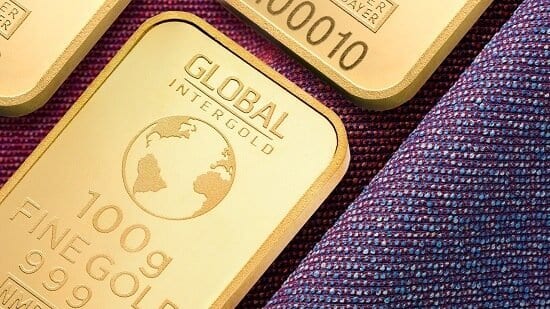
Gold is always weighed by the troy ounce
One of the reasons why the troy ounce is still in use is because gold and silver are measured using beam balances. When we compare the troy ounce to the regular ounce, we realise that the troy ounce has 2.75 grams more precious metals. If you are new to buying gold, it is important not to make the mistake and buy gold in regular ounces. It may not seem a lot at first, but if you purchase 100 ounces, this quickly adds up to 275 grams of gold. At the current spot price of gold of $42.66 per gram, this means that you have lost $11,731 of gold. Spot prices of gold and silver used in international markets around the world are always based on troy ounces. So, when we see that the price of gold is stated per ounce, it implies the troy ounce is in use as the unit of measure.
Call us to know more about buying gold
If you are new to buying gold, our team of investment 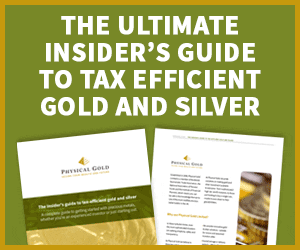
Apart from walking you through the strategies of buying gold, we can also offer advice on making the right choices when it comes to investing in precious metals, so you can build a great portfolio that will reap rich rewards in the years to come.
Image credits: Michael Steinberg

